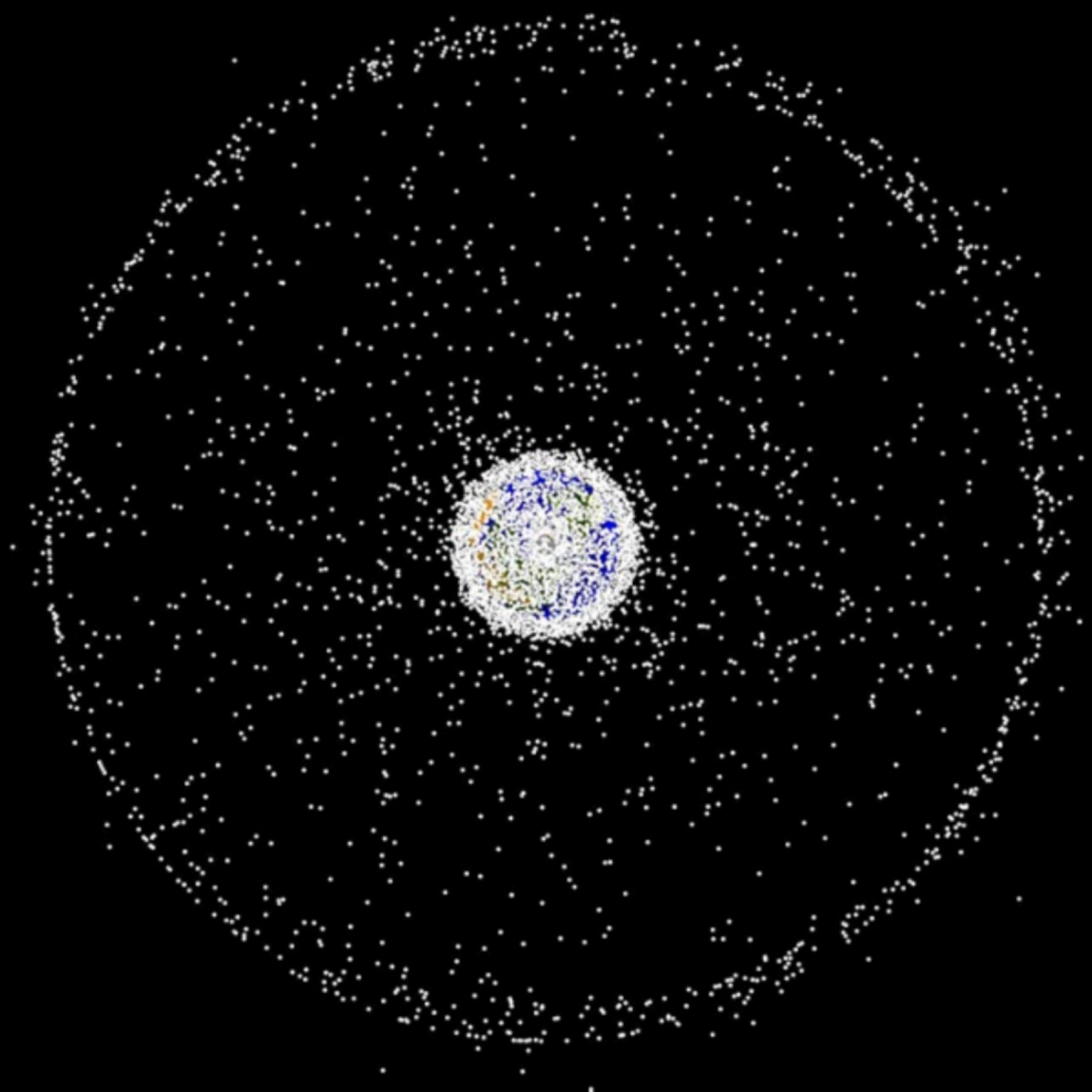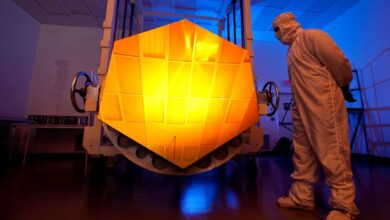NASA Stennis Continues Preparations for Future Artemis Testing

Crews at NASA’s Stennis Space Center cleared a milestone Dec. 11, installing a key component in preparation for future Green Run testing of NASA’s new Exploration Upper Stage (EUS) vehicle for use on the SLS (Space Launch System) rocket.
Four large diffusers, each weighing 14 tons, were lifted by crane for installation on the Thad Cochran Test Stand (B-2). The diffusers are a critical component designed to help direct engine exhaust away from the EUS during hot fire testing to minimize heat exposure to sensitive vehicle systems.
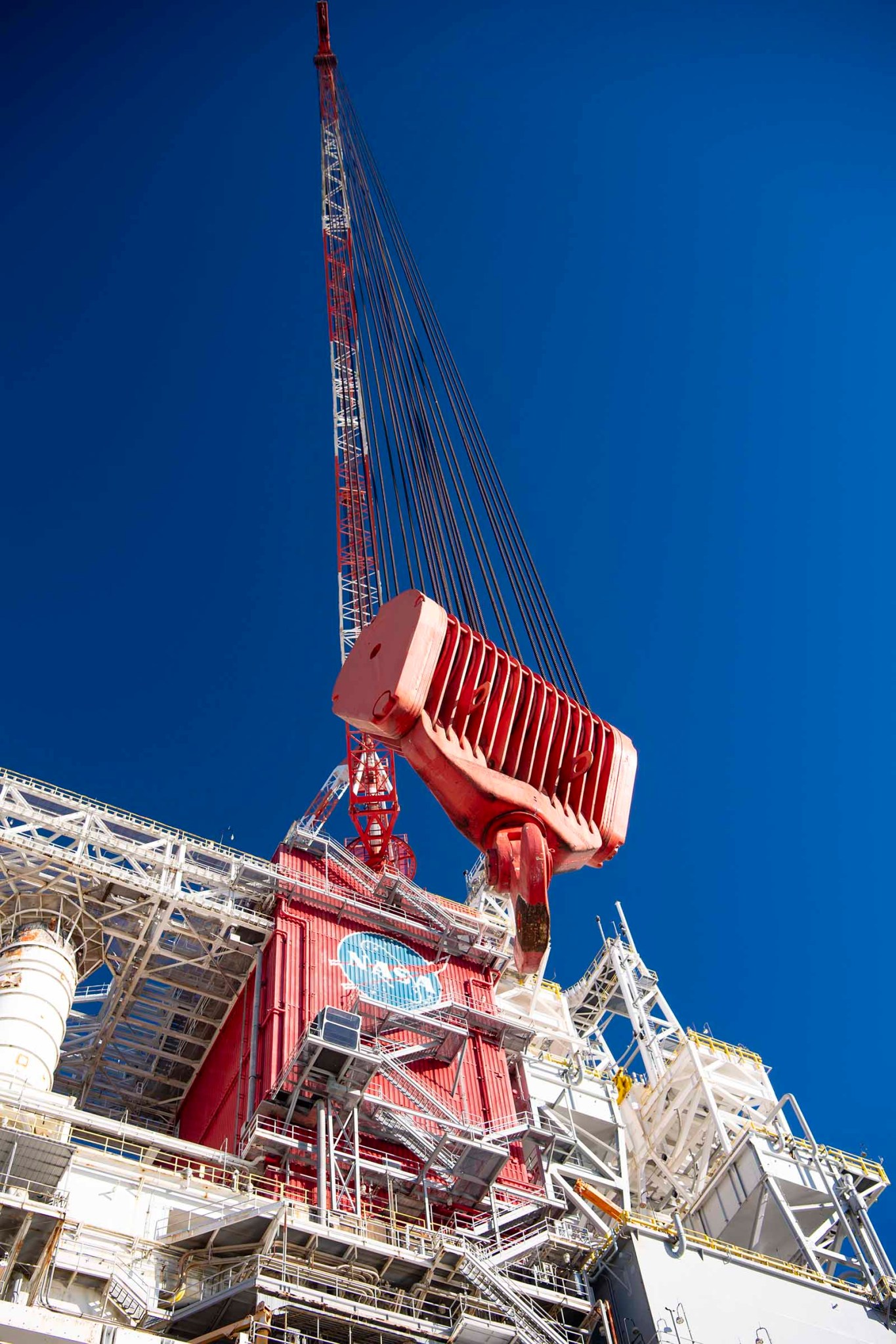
NASA Stennis teams lift and install large diffusers onto the Thad Cochran Test Stand (B-2).
NASA/Danny Nowlin
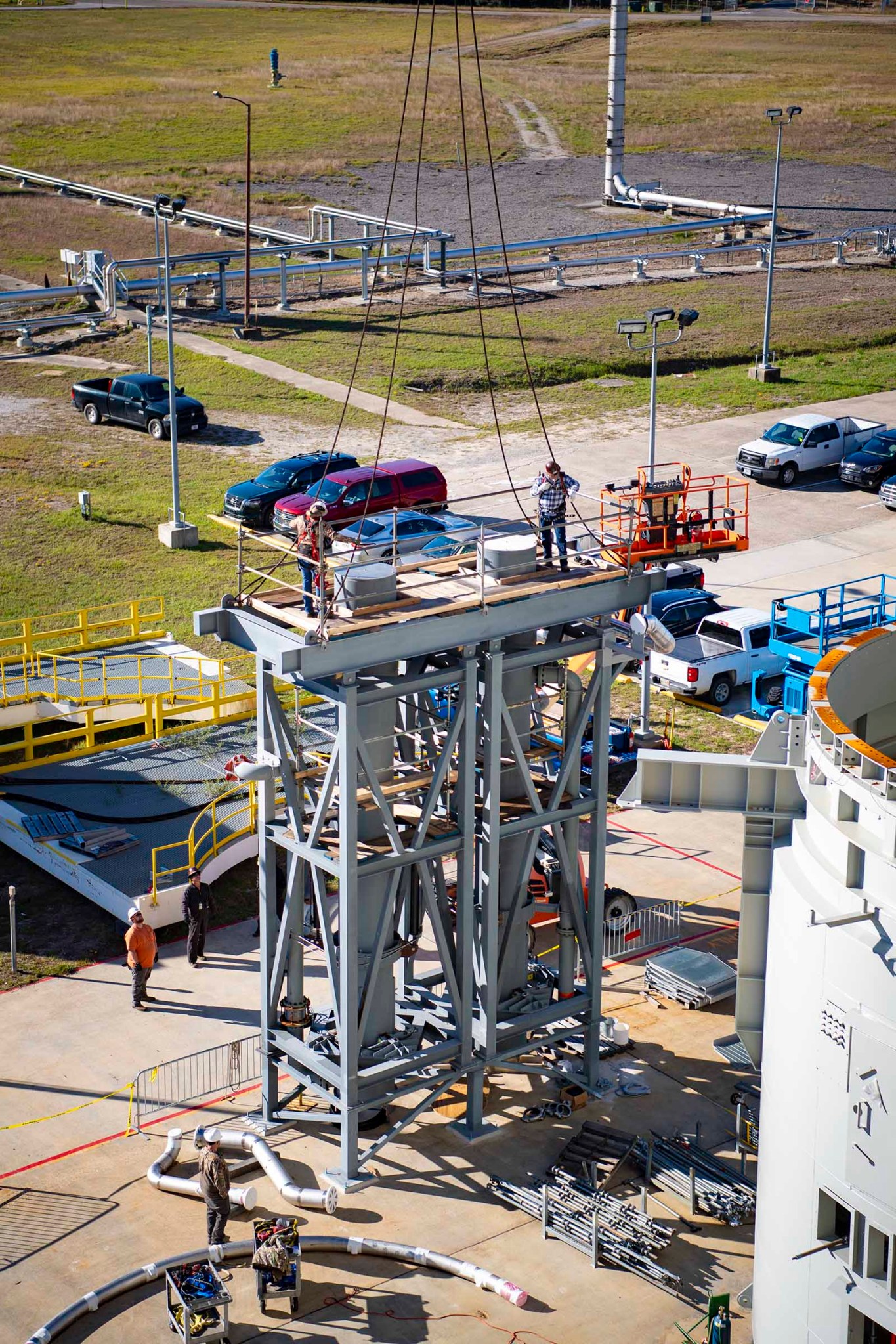
NASA Stennis teams lift and install large diffusers onto the Thad Cochran Test Stand (B-2).
NASA/Danny Nowlin
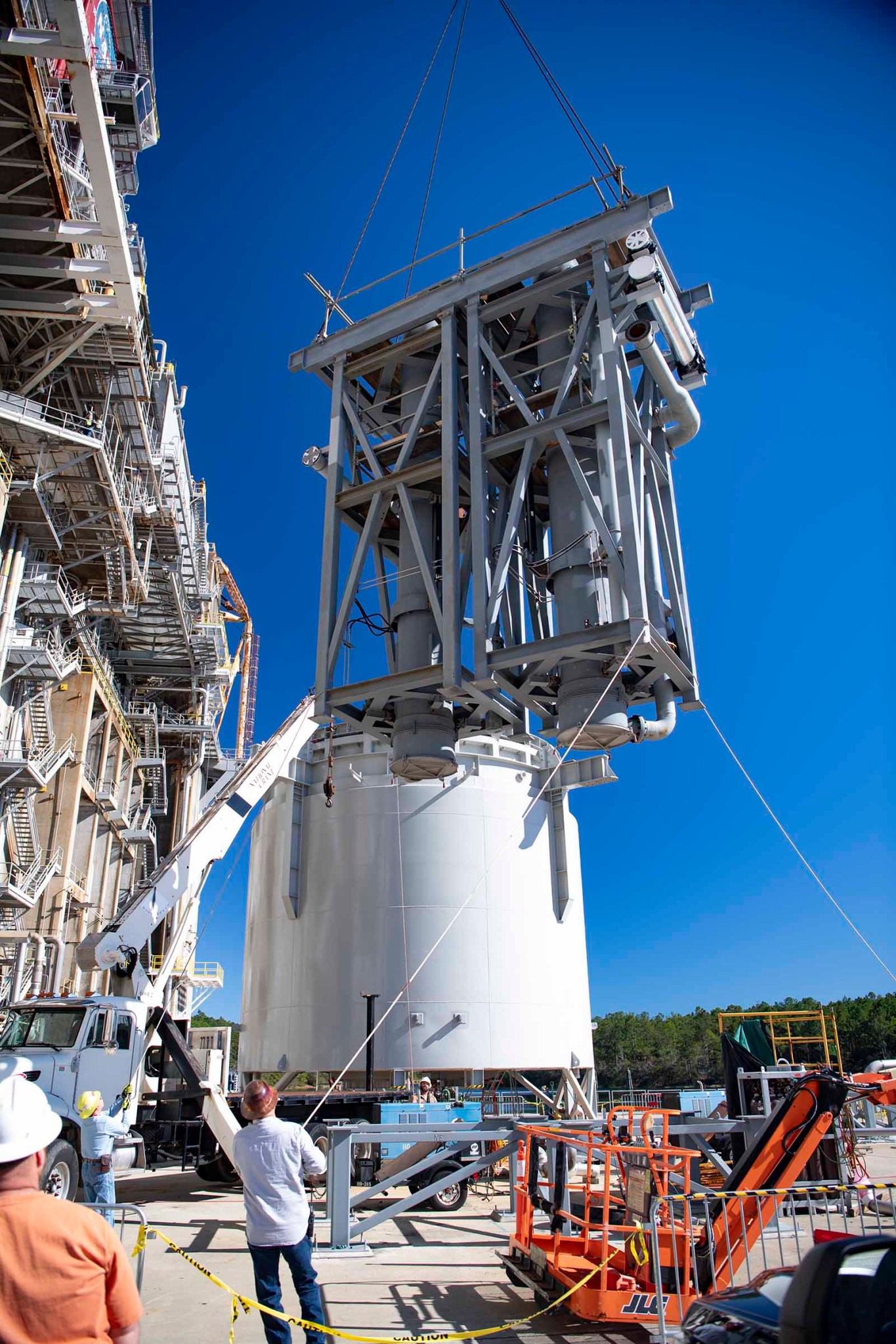
NASA Stennis teams lift and install large diffusers onto the Thad Cochran Test Stand (B-2).
NASA/Danny Nowlin

NASA Stennis teams lift and install large diffusers onto the Thad Cochran Test Stand (B-2).
NASA/Danny Nowlin
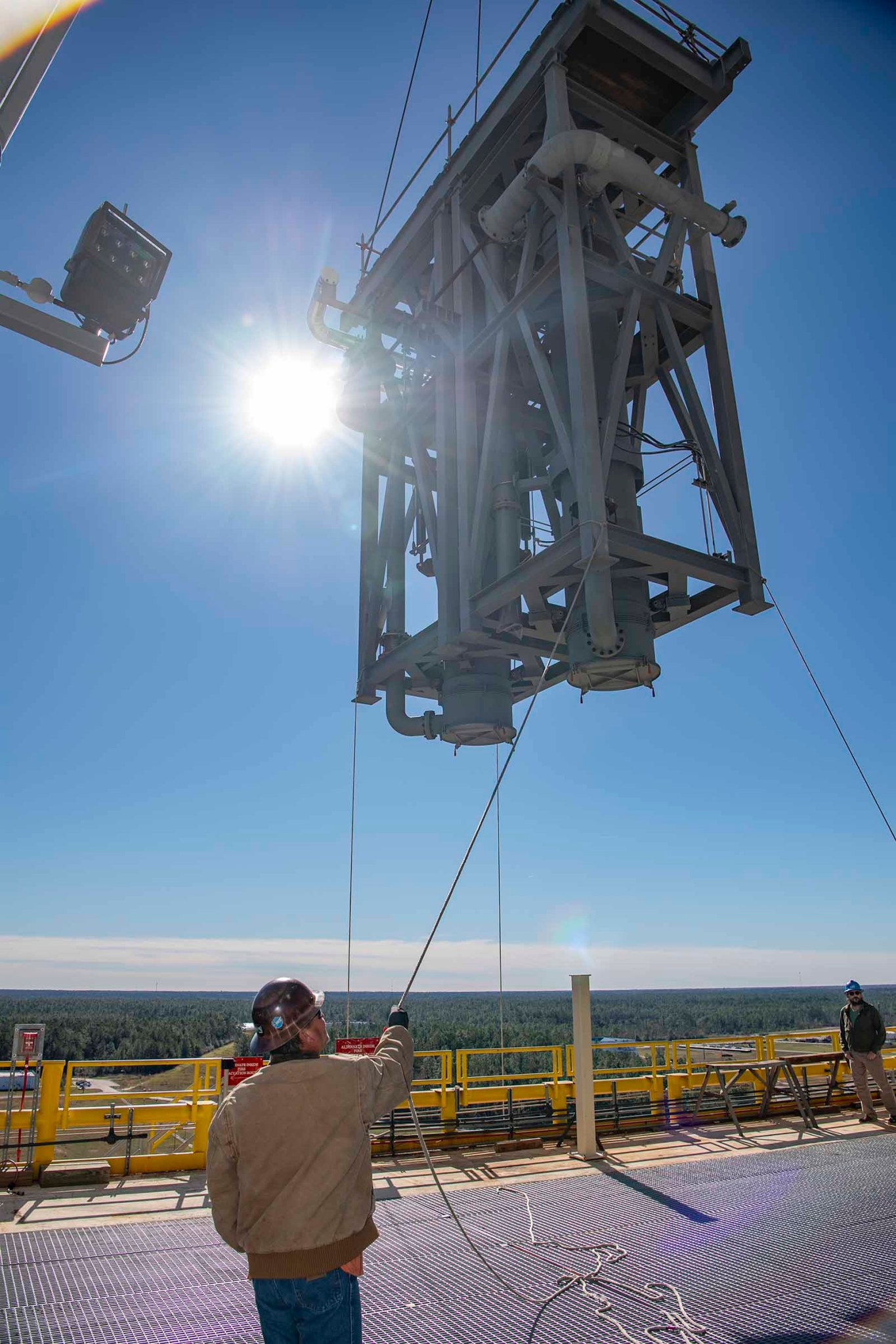
NASA Stennis teams lift and install large diffusers onto the Thad Cochran Test Stand (B-2).
NASA/Danny Nowlin
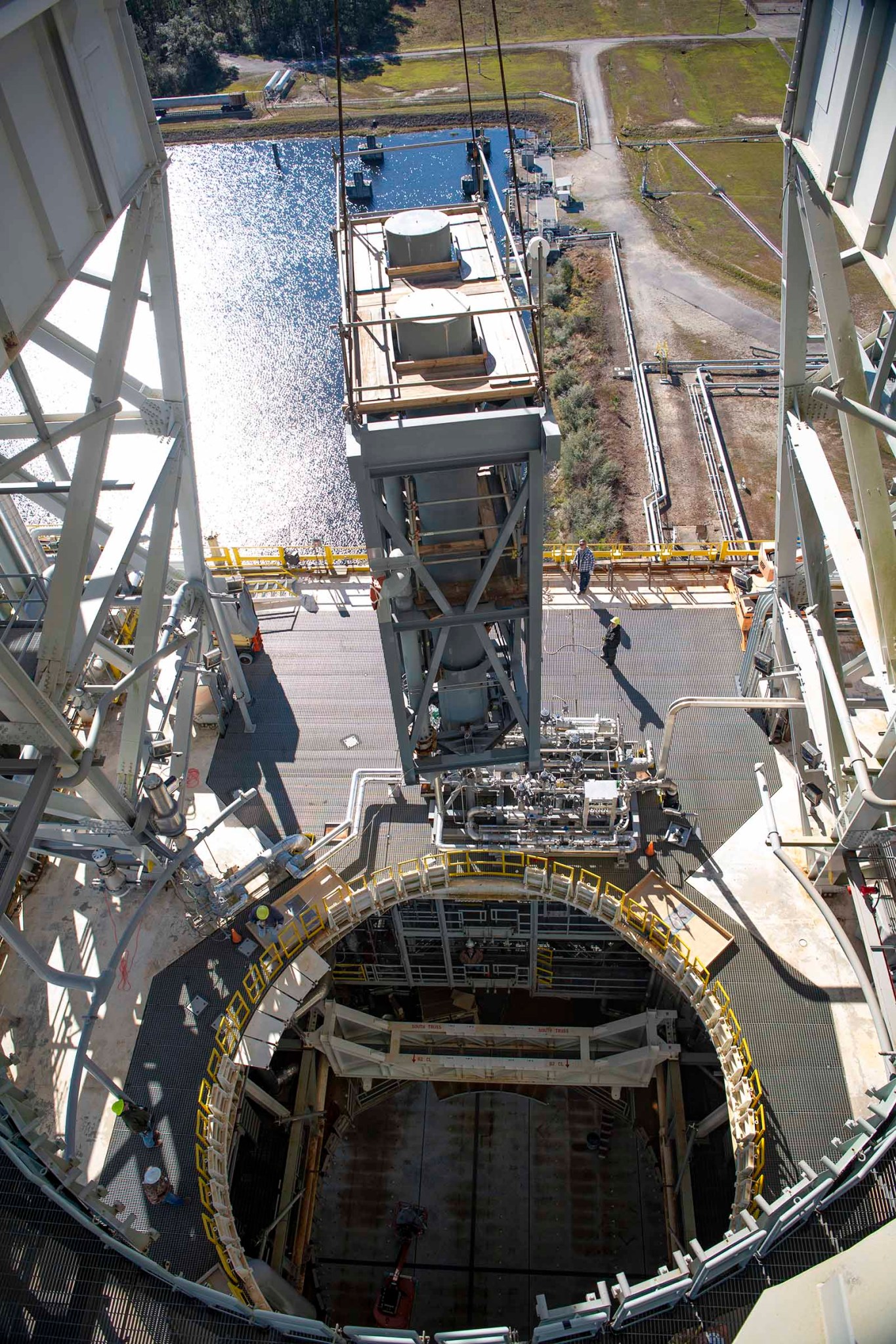
NASA Stennis teams lift and install large diffusers onto the Thad Cochran Test Stand (B-2).
NASA/Danny Nowlin
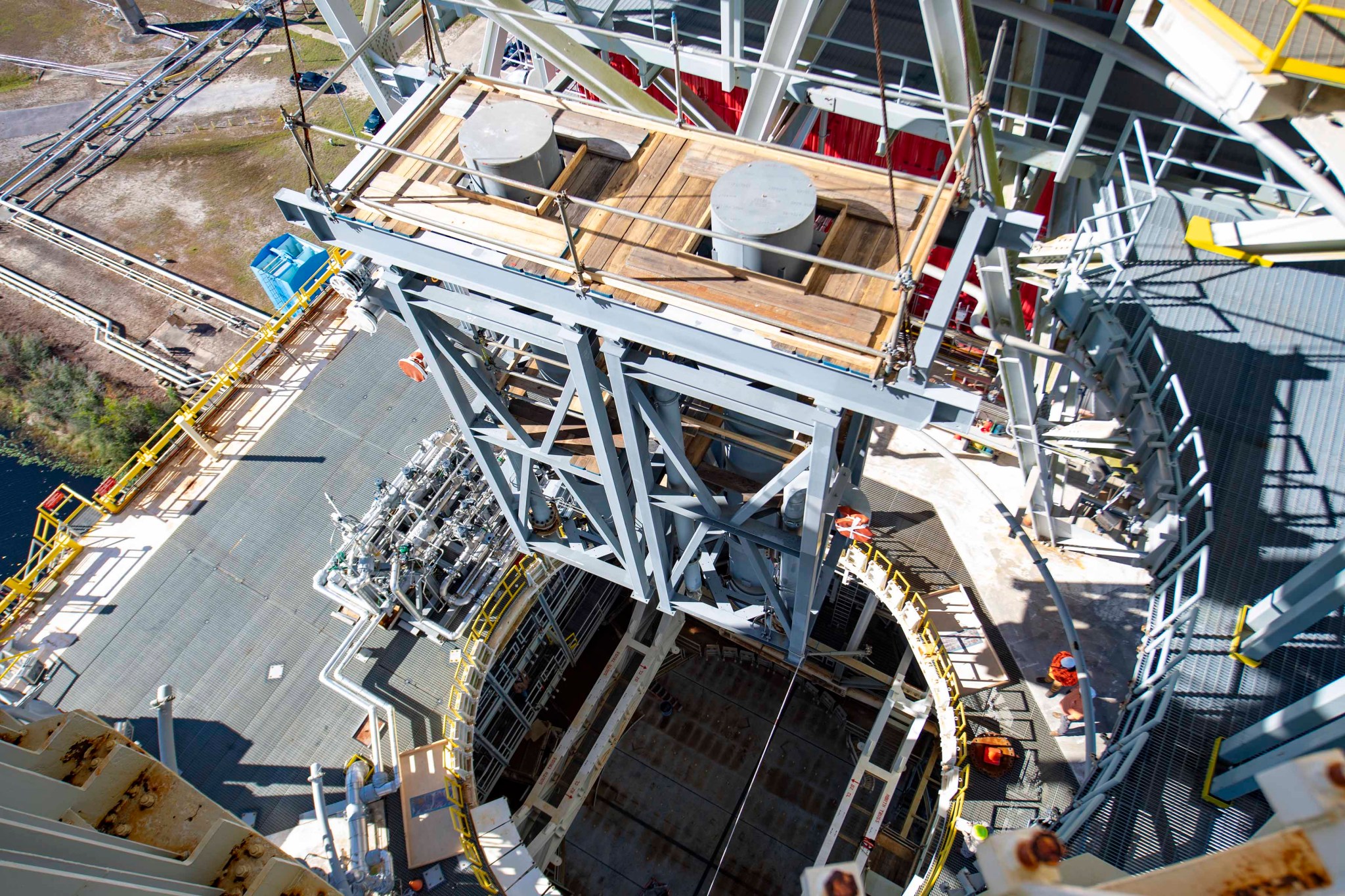
NASA Stennis teams lift and install large diffusers onto the Thad Cochran Test Stand (B-2).
NASA/Danny Nowlin

NASA Stennis teams lift and install large diffusers onto the Thad Cochran Test Stand (B-2).
NASA/Danny Nowlin

NASA Stennis teams lift and install large diffusers onto the Thad Cochran Test Stand (B-2).
NASA/Danny Nowlin
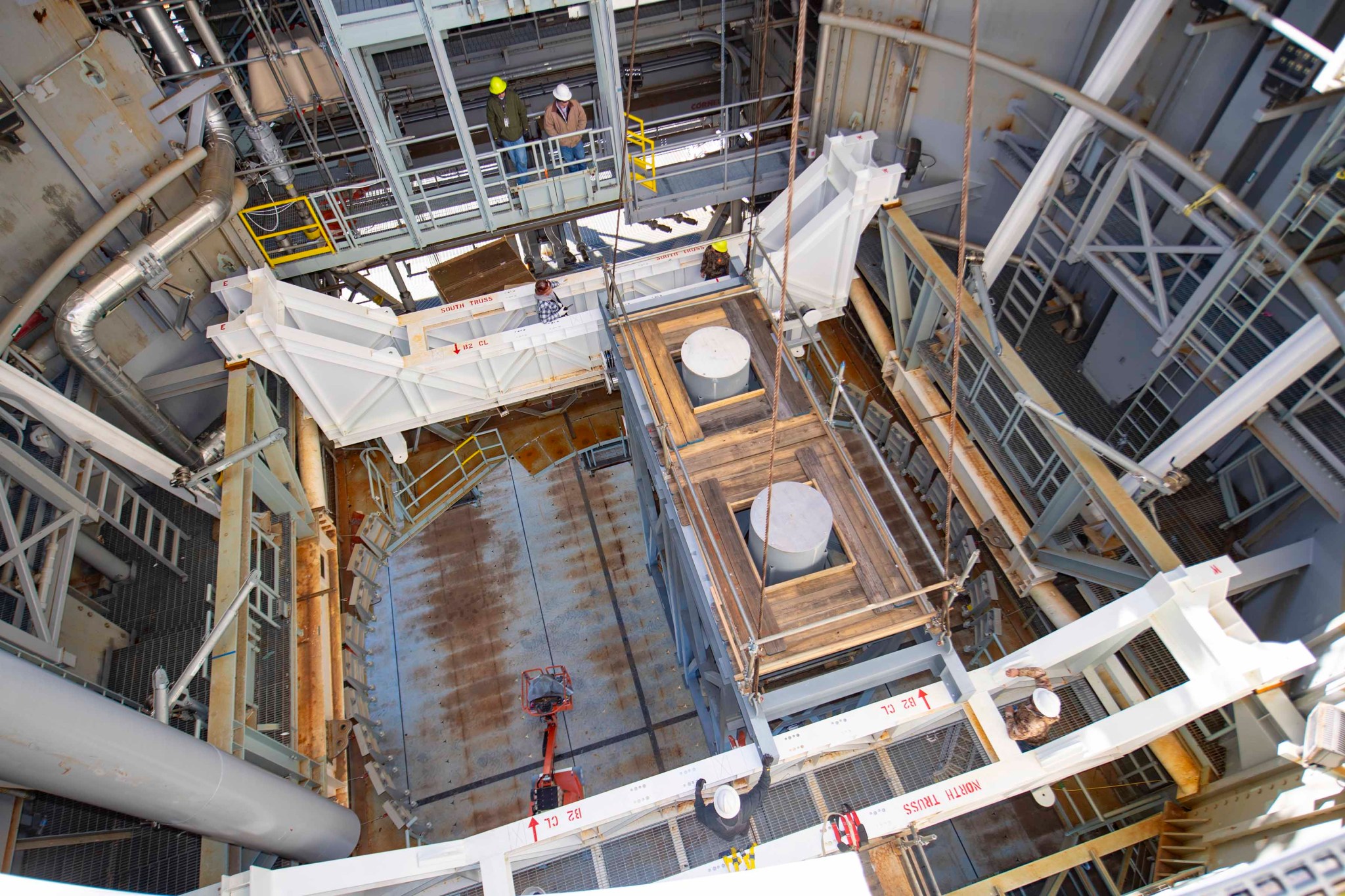
NASA Stennis teams lift and install large diffusers onto the Thad Cochran Test Stand (B-2).
NASA/Danny Nowlin
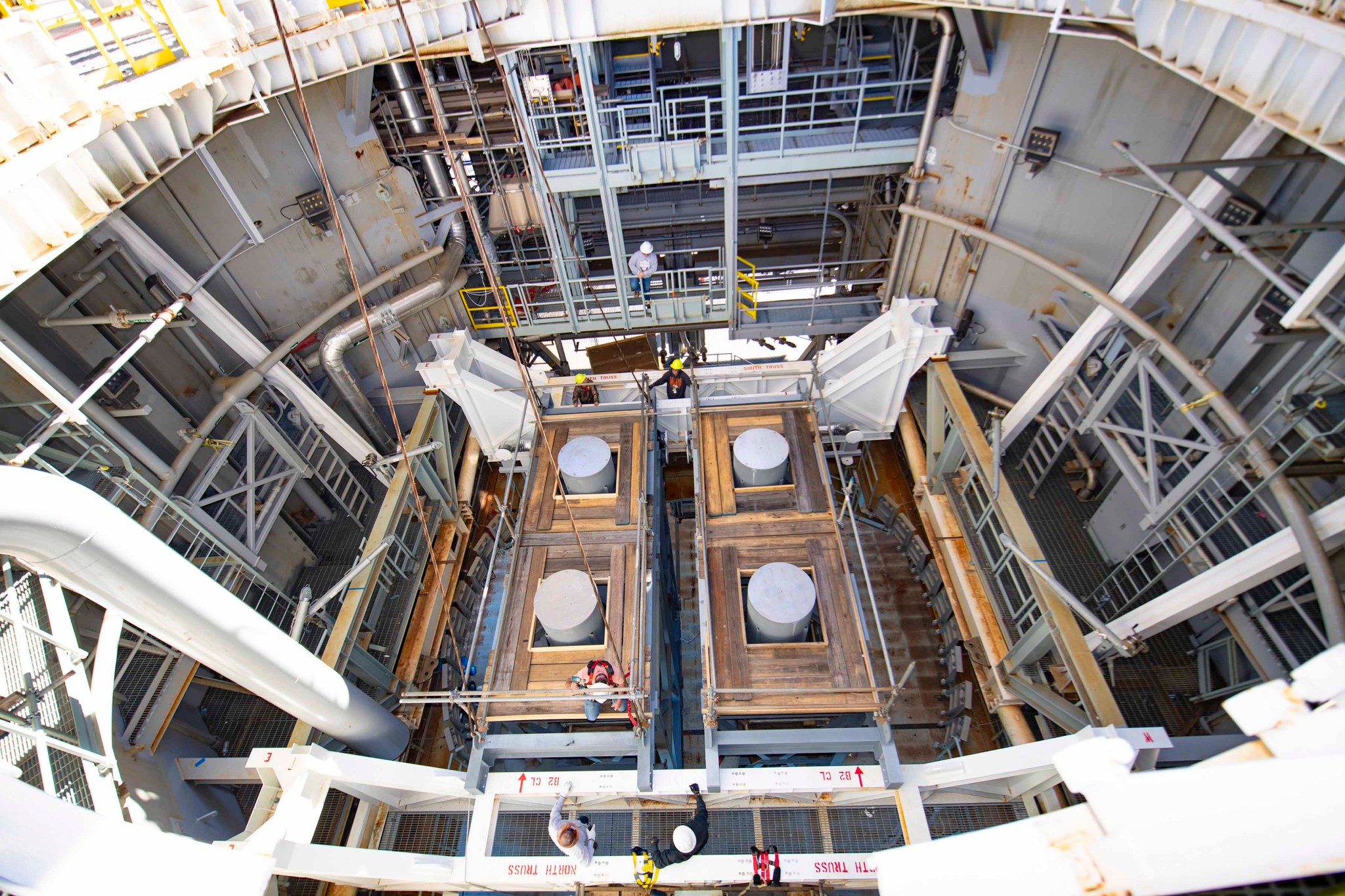
NASA Stennis teams lift and install large diffusers onto the Thad Cochran Test Stand (B-2).
NASA/Danny Nowlin
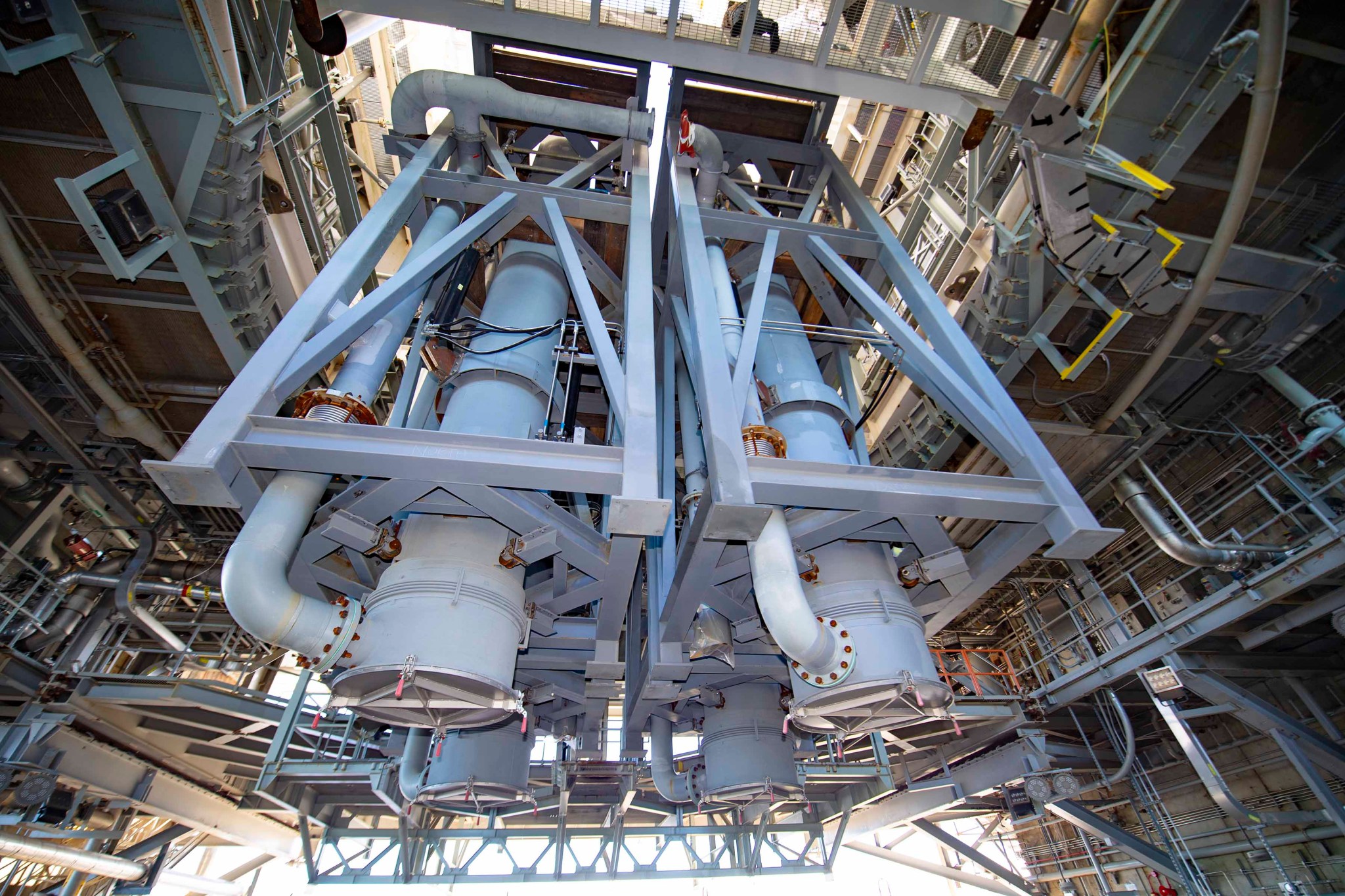
NASA Stennis teams lift and install large diffusers onto the Thad Cochran Test Stand (B-2).
NASA/Danny Nowlin
NASA’s new EUS is being built at NASA’s Michoud Assembly Facility in New Orleans as a more powerful SLS second stage to send the Orion spacecraft and heavier payloads to deep space as NASA continues its mission to explore the secrets of the universe for the benefit of all. The EUS is expected to fly on the Artemis IV mission following a series of Green Run tests of its integrated systems at NASA Stennis to demonstrate it is ready to fly. The test series will culminate with a hot fire of the four RL10 engines that will power the EUS.
https://www.youtube.com/embed/qaIQtS-WkZs?feature=oembed&enablejsapi=1&html5=1&origin=https://www.nasa.govNASA Stennis teams lifted and installed large diffusers onto the Thad Cochran Test Stand (B-2) on December 11, 2023, in preparation for future Green Run testing of the new Exploration Upper Stage before it flies on the SLS (Space Launch System) rocket as part of NASA’s Artemis missions to the Moon and beyond.
During an actual flight, critical EUS systems will be protected by the SLS interstage. To protect the systems during Green Run testing, teams are using an interstage simulator, a size-and-weight replica of the actual SLS interstage, and the connected diffusers.
The system requires a high level of precision. The diffusers will be connected to the EUS engine nozzles using a flexible seal so gimbaling, or moving a rocket engine a few degrees along a tight circular axis to direct the thrust and “steer” the vehicle, can occur during testing. They also are designed to facilitate propellant connections and allow test teams access to the engine area as needed.
The carbon steel diffusers were precisely designed by a joint NASA Stennis and Jacobs Engineering team, using computational models, subscale testing, and historical data. The units then were made by Custom Steel Fabricators in Columbia, Tennessee, and delivered by truck to NASA Stennis.
Following lift and installation on the test stand, the diffuser system will be connected to the facility water and hydraulic supplies. A final checkout of the system will include a full test stand water flow demonstration.

